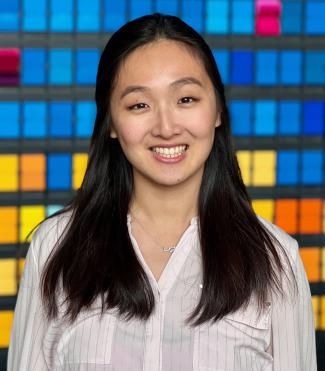About 55 members of the diocesan community and guests came together on May 17 at the Cathedral Church of St. Paul in Boston to celebrate Asian Heritage Month. Focused on exploring what it means to be Asian American in both the church and society, this first-time event was organized by Asian Pacific Islander American Episcopalians of the diocese. Bishop Suffragan Allen Shin of the Diocese of New York gave the keynote address, followed by a panel discussion, Holy Eucharist with special music, and dinner and fellowship.
In the essay that follows, Ivy Wang, a student at Harvard Divinity School who served as seminarian this past academic year at the Cathedral Church of St. Paul, reflects on her experience of the celebration and growing clearer about what it means to be the body of Christ--and who belongs.
“We are indispensable members of the body of Christ,” the Rev. Jo Ann Lagman proclaimed in her welcome to the APIA (Asian Pacific Islander American) Celebration at the Cathedral Church of St. Paul in Boston on May 17, organized by the APIA community of this diocese in honor of Asian Heritage month.
“And it matters that we gather to celebrate.”
I remember so viscerally our Eucharist: three APIA Episcopalians stood in a row in front of the altar, offering us the blessed elements. Most of us had never seen anything like this. When it was my turn, an Asian woman priest handed me the body of Christ; another Asian woman offered me the Communion wine. She could have been my big sister. Hearing her tell me in Cantonese that Christ had shed his blood for me, I swallowed my tears along with the wine.
For me, last Saturday’s celebration took place within a broader journey of finding my place in The Episcopal Church. I emigrated from China to Vancouver as a child, to a neighborhood where white people were the minority. (My first elementary school was 80 percent Asian.) At times, then, it has been challenging to feel like I belong in this liturgically beautiful, Spirit-filled and occasionally foreign world with strong English roots. I am always self-conscious when I go up to read, an old fear from my immigrant childhood when mispronounced words meant laughter and exclusion. (The “collect” is not pronounced the same way as any old “collect,” I recently learned.) In this past year as seminarian at the Cathedral Church of St. Paul, I have felt fully accepted and have grown to love the church. And it is precisely because I so love my cathedral that last Saturday, as it filled with the raucous laughter of my Chinese aunties, as we clapped and swayed and shook tambourines to worship hymns, I found an even deeper belonging.
I belonged, finally, with my whole body.
Ten years ago, as a business undergrad, I questioned the necessity of DEI and representation. Similar questioning perhaps led to the canceling of APIA and other affinity group celebrations for graduating students at Harvard this month. Politics aside, I know from experience it can be easy to dismiss the necessity of multicultural ministries and celebrations when there are so many other priorities competing for our resources. Yet diversity and inclusion is a theological as well as political framework, and its pursuit is already grounded in our faith.
As a student in divinity school, I recently took a class on "The Sacramental Imagination" and spent a lot of time thinking about the body of Christ. Who belongs in the body of Christ? We talked about it all semester. Yet it wasn’t until Saturday, across the Communion cup at our APIA celebration (and away from the classes and readings), that it finally all made sense to me.
The color of our skin, the shape of our eyes, the shape of our dreams–the specificity of Christ incarnate is the specificity of these bodies.
There is not some other, amorphous body towards which we much constantly strive and fall short; against which we must constantly define and redefine ourselves, the eternal other. When we sang the traditional Japanese blessing “Kirisuto No Heiwa” (May the Peace of Christ Be With You); when we began and ended our worship with South Asian Carnatic music; when we offered our readings in languages spoken by Asian Americans (including English!), we were not bringing in elements of “multiculturalism” to ornament some predefined mold of what Episcopal worship “should” look like. Rather it is these bodies that are already the most glorious body of Christ.
If we assert, as we do each Sunday, that we are all the body of Christ, then we are called to practice not only acceptance of diversity but also its celebration. When we celebrate him in these specific ways – with the specificity of APIA language and song and joy, for example – we restore the church to a new wholeness, a wholeness we can only ever know if we transform how we expect to encounter Jesus, and whom we celebrate as his body. In these times, this is some of the most vital work we can do.
--Ivy Wang

